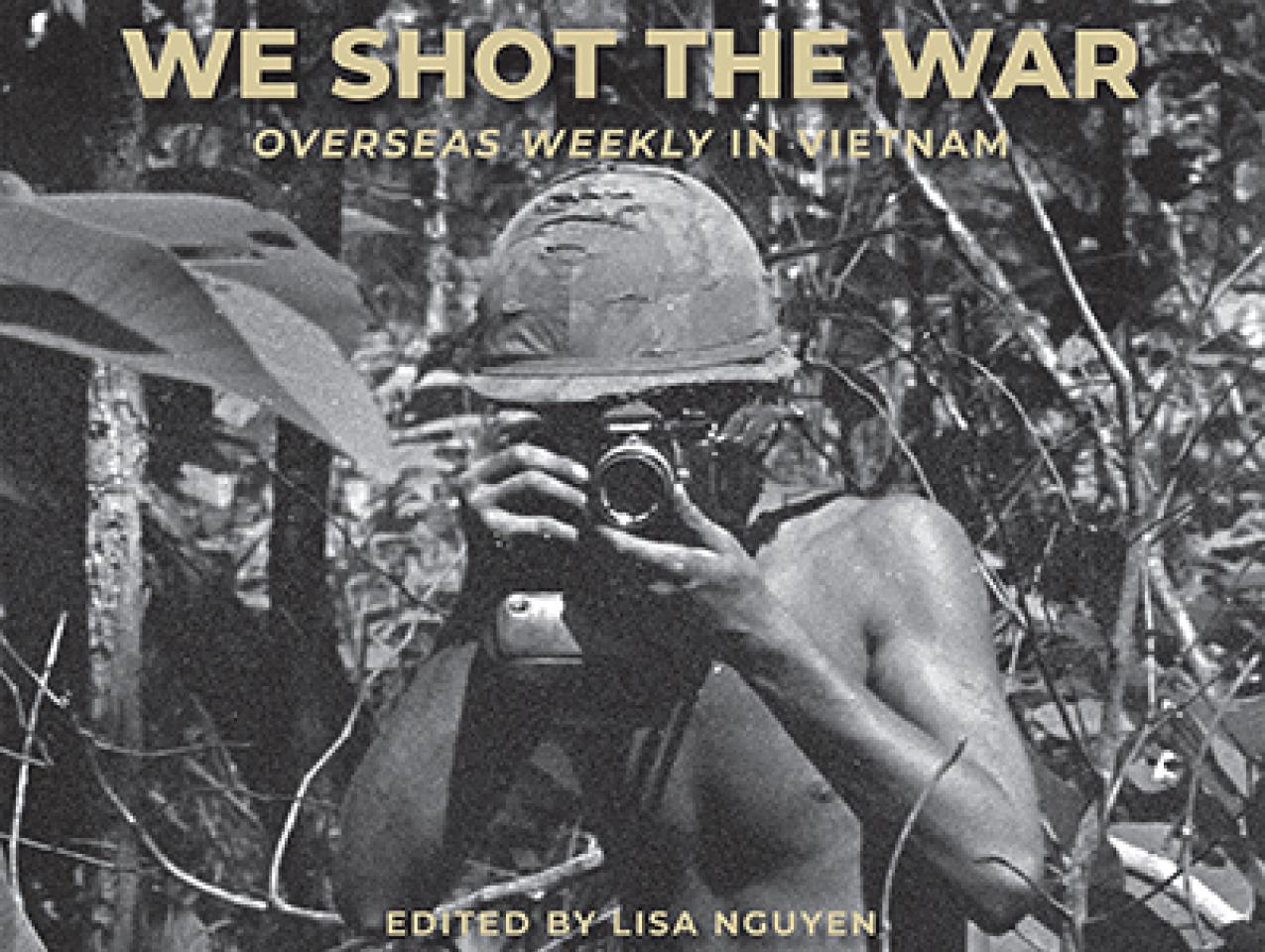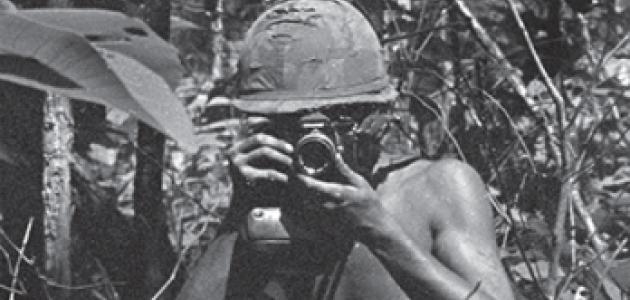
Intended as a counterpoint to the US Department of Defense-sanctioned press such as Stars and Stripes, Overseas Weekly (OW) was first published in 1950 by enterprising Stanford University graduates Cecil and Marion von Rospach. We Shot the War: Overseas Weekly in Vietnam, edited by Lisa Nguyen (The Hoover Institution Press; on sale August 1, 2018; 978-0-8179-2164-4; $49.95) unearths the important role of this publication in one of the most controversial periods of American history.
Cheekily known as “Oversexed Weekly” for its tabloid sensibility, OW gained a loyal following by covering stories from the serviceman’s point of view. When the paper printed a series articles in the early 1950s on such controversial subjects as the sex reassignment surgery of a World War II vet, ill treatment of American GIs by Turkish allies, and an expose of American Nazi Party activities within US military ranks, OW was banned from the military post exchange (PX) newsstands by irate commanders. That ban was lifted after a show of support from several US congressmen, the Hearst Corporation, and the ACLU.
As the Vietnam War escalated in the 1960s, Marion von Rospach—who had taken control of OW after her divorce—launched a Pacific edition covering the war from a bureau in Saigon. She entrusted the job to a promising young journalist out of Texas named Ann Bryan. Bryan set up a one woman show in Saigon acting as “writer, photographer, editor, circulation manager, public relations specialist, copyboy, and putzfrau.” But when the first Pacific issue of OW was released on October 23, 1966, it was once more denied a space on the PX newstands. Fierce and determined, von Rospach and Bryan fought the de facto ban in a yearlong legal battle. The Overseas Weekly emerged victorious. An elated Bryan began expanding operations, adding reporters and photographers whose mission was to tell the story of the war through the soldiers’ eyes.
The selection from the 22,000 images in the photo archive Overseas Weekly, Pacific Edition provides a raw glimpse into the Vietnam War from 1966 to 1972. These provocative images—many of which have never before been seen, published or exhibited—depict a broad array of combat experiences, including the sanguine moments of war and the humanity that emerged from chaos. Bringing these rare photographs—taken by both soldiers and professional photographers in Vietnam, Laos, Cambodia, and elsewhere—to a broad public audience will inform a new generation of the experience of the American GIs on and off the battlefield. Included in We Shot the War are moving personal essays by OW’s intrepid photographers Cynthia Copple, Don Hirst, Art Greenspon, and Brent Procter.
“For more than forty years I have felt that part of my life’s work and part of my soul has been missing. I was a freelance photographer in Vietnam from December of 1967 until May of 1968 when I was shot in the face during the second Tet offensive. During that period I was a stringer photographer for the Associated Press and Overseas Weekly. I often felt that some of my best work was on those rolls of film.” —Art Greenspon, photographer best known for “Help from Above.”
In addition to reporting sports and human-interest stories, the Overseas Weekly tackled controversial topics such as war profiteers, the black market, media censorship, racial friction and integration, and drug abuse. It also ran articles about the military justice system and GIs who were court-martialed for assaults on Vietnamese civilians or attacks on their commanding officers. “Owned, published, and edited by Americans for Americans overseas,” the Overseas Weekly, Pacific Edition ceased circulation in 1971. Instead of falling into obscurity, the Overseas Weekly and its remarkable archives have found new life in We Shot the War and in a free exhibition that is currently on view at the Hoover Institution.
“The scenes and faces found in the Overseas Weekly photographs stand testament to the wide-ranging hardships that the conflict brought to soldiers and civilians,” writes Eric Wakin, deputy director of the Hoover Institution. “These photographs help viewers remember that the war is not just epic tragedy but a collection of individual experiences—and that the sorrows, joys, fears, and valor of soldiers must be given voice.”
The Hoover Institution Library & Archives acquired the Overseas Weekly, Pacific edition collection in 2014. Once thought lost to history, a selection of images from the collection are now on view in a free exhibition at the Hoover Institution, Stanford University.
ABOUT THE HOOVER INSTITUTION LIBRARY & ARCHIVES: Founded by Herbert Hoover in 1919, the Hoover Institution Library & Archives are dedicated to documenting war, revolution, and peace in the twentieth and twenty-first centuries. With nearly one million volumes and more than six thousand archival collections from one hundred and seventy-one countries, Hoover supports a vibrant community of scholars and a broad public interested in the meaning and role of history. For more information on the Hoover Institution Library & Archives, visit www.hoover.org/library-archives.




















